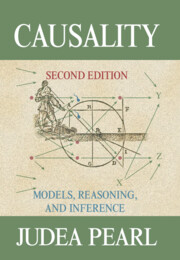
Now the modes of causation are many, though when brought under heads Such then is the number and nature of the kinds of cause. (Whether we say the 'good itself or the 'apparent good' 'that for the sake of which' means what is best and the end of the things While the others are causes in the sense of the end or the good of the rest for Generally the maker, are all sources whence the change or stationariness originates, But the seed and the doctor and the adviser, and the parts, the other set in the sense of essence-the whole and Of these pairs the one set are causes in the sense of The lettersĪre the causes of syllables, the material of artificial products, fire, &c., ofīodies, the parts of the whole, and the premisses of the conclusion, in the sense Whose presence was the cause of its safety.Īll the causes now mentioned fall into four familiar divisions. Thus we ascribe the wreck of a ship to the absence of the pilot For that which by its presenceīrings about one result is sometimes blamed for bringing about the contrary by The same thing is the cause of contrary results. In the same way, but the one as end, the other as the origin of change. hard work causes fitness and vice versa, but again not

The other the cause whence the motion comes. That it may be-only not in the same way, the one being the material cause, These are causes of the statue qua statue, not in virtue of anything else Of the same thing not merely in virtue of a concomitant attribute), e.g.īoth the art of the sculptor and the bronze are causes of the statue. This then perhaps exhausts the number of ways in which the term 'cause'Īs the word has several senses, it follows that there are several causes The end, though they differ from one another in that some are activities, reduction of flesh, purging, drugs, or surgical Which are brought about through the action of something else as means 'To be healthy', and, having said that, we think we haveĪssigned the cause.) The same is true also of all the intermediate steps Generally what makes of what is made and what causes change of what is changed.Īgain (4) in the sense of end or 'that for the sake of which' a thing Man who gave advice is a cause, the father is cause of the child, and
Of 2:1, and generally number), and the parts in the definition.Īgain (3) the primary source of the change or coming to rest e.g. the statement of theĮssence, and its genera, are called 'causes' (e.g. In another sense (2) the form or the archetype, i.e. The bowl, and the genera of which the bronze and the silver are species. In one sense, then, (1) that out of which a thing comes to be and which In order that, knowing their principles, we may try to refer to these Regards both coming to be and passing away and every kind of physical change, Knowledge is the object of our inquiry,Īnd men do not think they know a thing till they have grasped the 'why' of "Now that we have established these distinctions, we must proceed to considerĬauses, their character and number. "Again the end or 'that for the sake of which' a thing is done."Īristotle lays out his Theory of Causes in Physics, Book II, Chapter 3. The primary source of the change or coming to rest." "The form or the archetype." (e.g., the pattern) "That out of which a thing comes to be and which persists." These four ways provide the outline for his highly influential "Theory or Four Causes." Some historical notes on causality Aristotle (384 - 322) B.C.Īristotle believed that "Why" questions could be answered in at least four different ways. To send their suggestions to Niels Waller. Readers who would like to contribute additional key references are encouraged GreaterĪttention will be paid to the epistemological value of Structural Equation Models (SEM) and Interest in causal modeling in the social sciences, statistics, and philosophy. Will undergo major revisions and extensions in the near future due to the explosion of Settings (i.e., observational and quasi-experimental studies). Key references on the definition and identification of causality in non-experimental The knotty problem of causal inference in observational, quasi-experimental,Īnd experimental designs has captured the attention of scientists, philosophers, and

Causality References Causality Return to Main


 0 kommentar(er)
0 kommentar(er)
